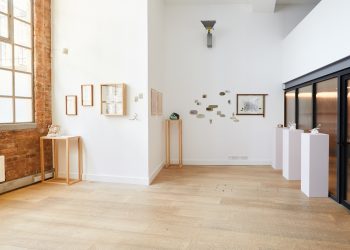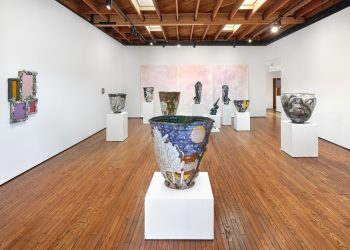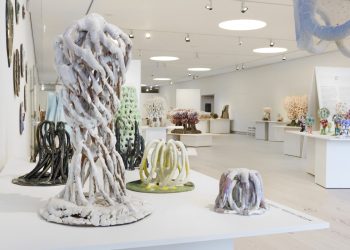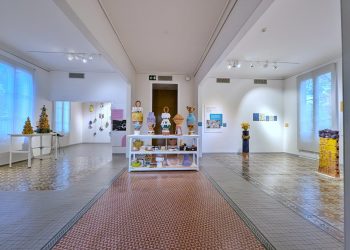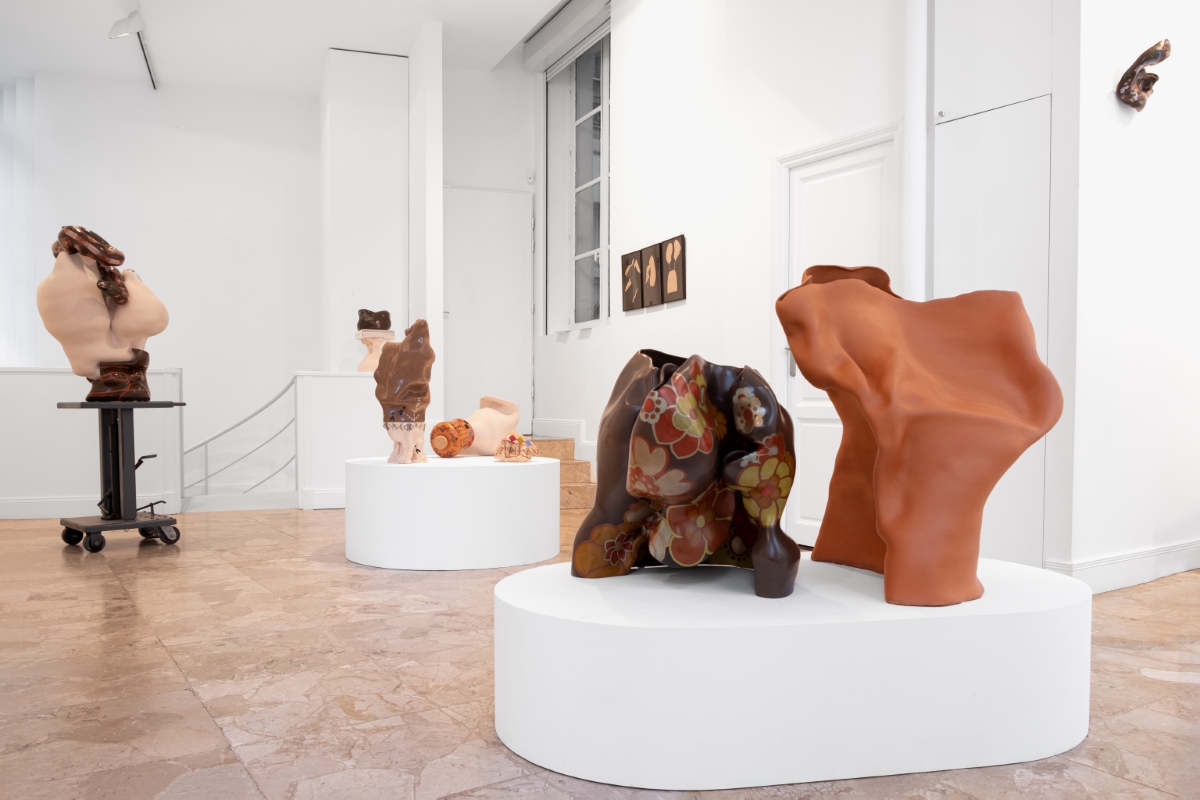
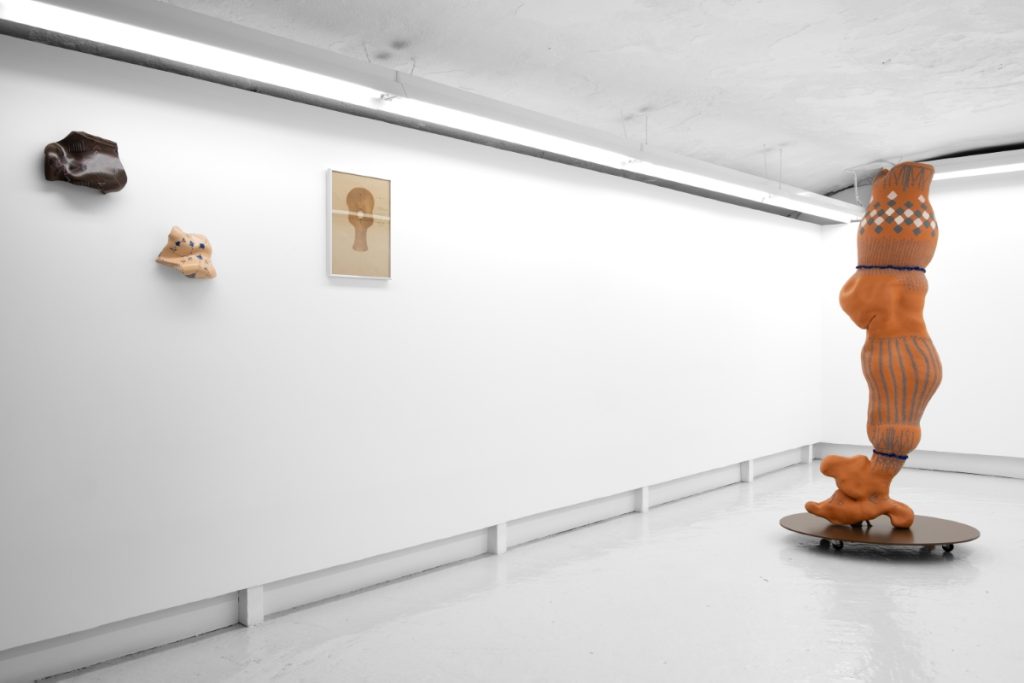
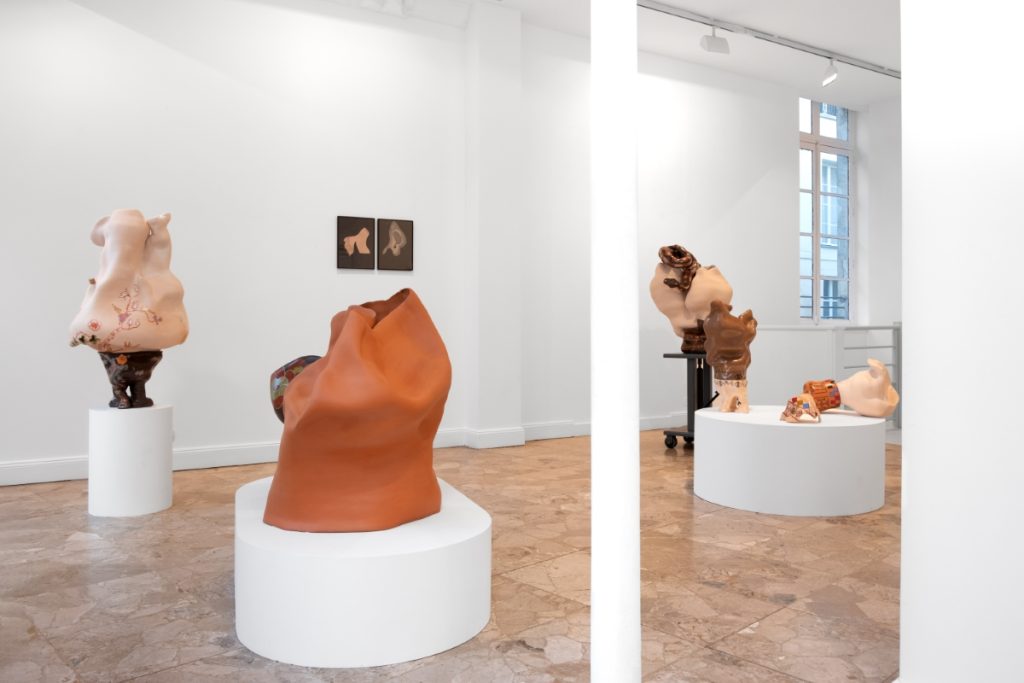
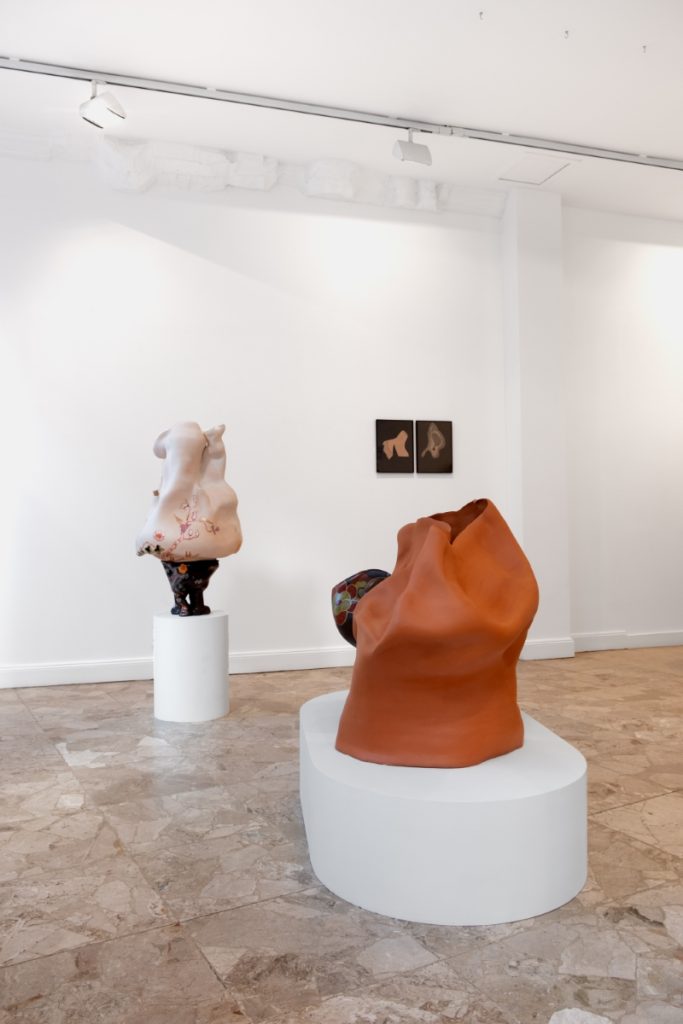
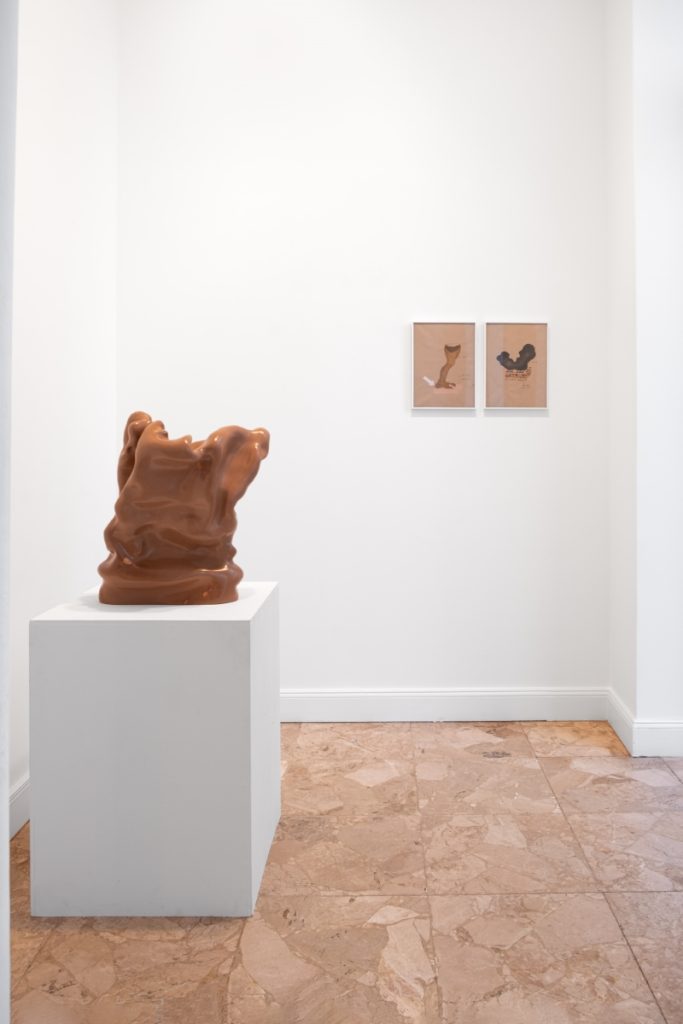
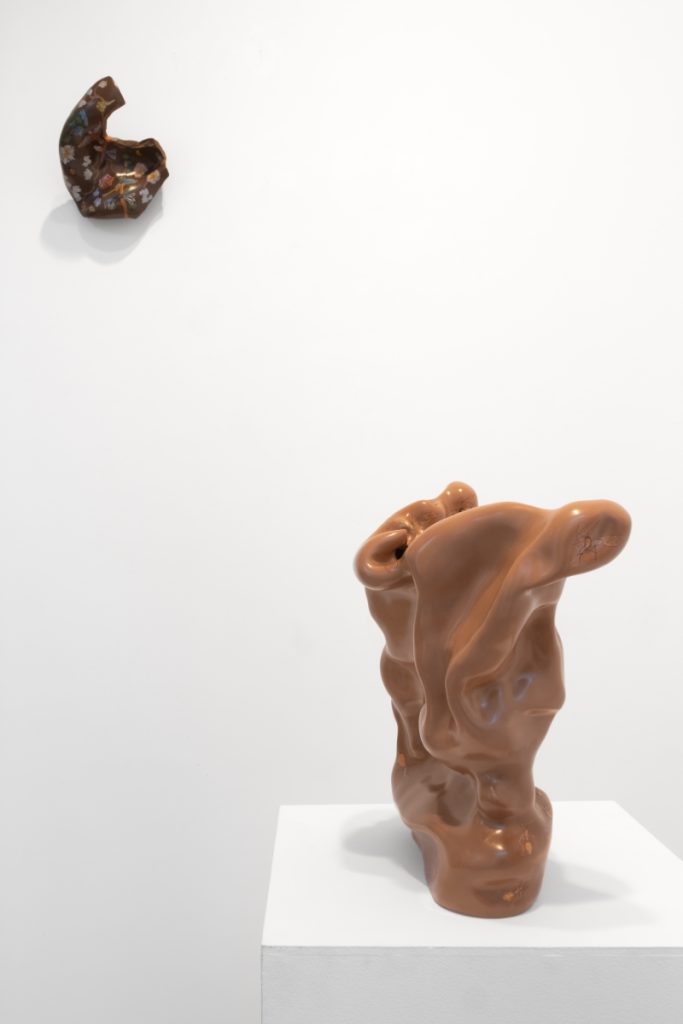
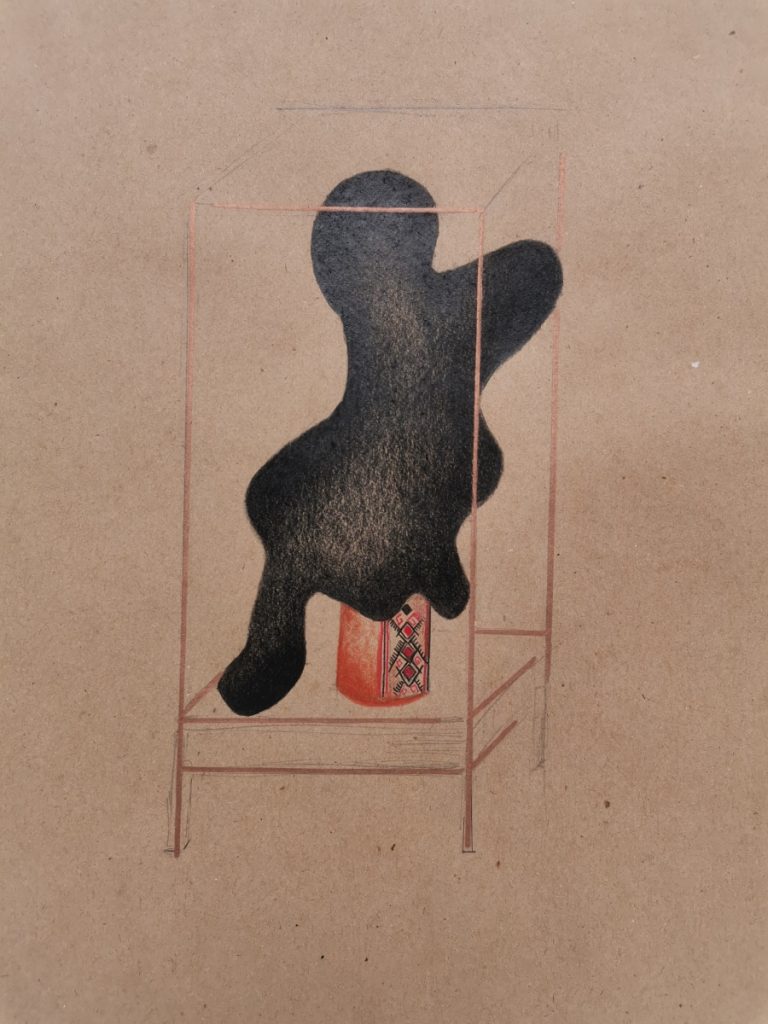
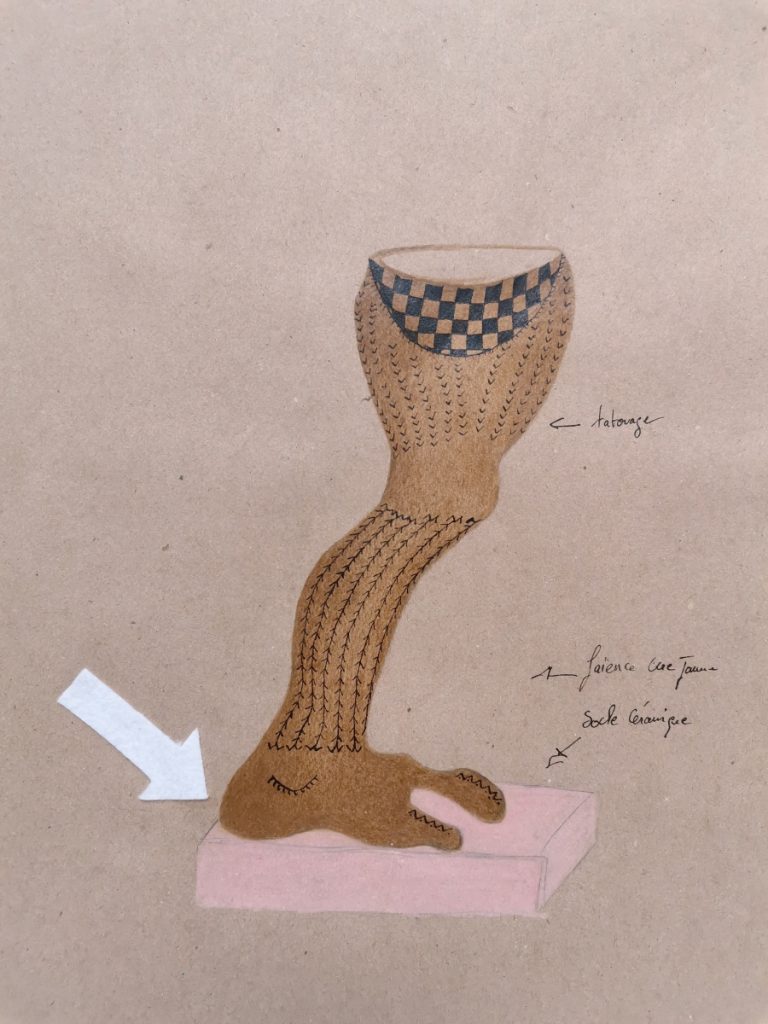
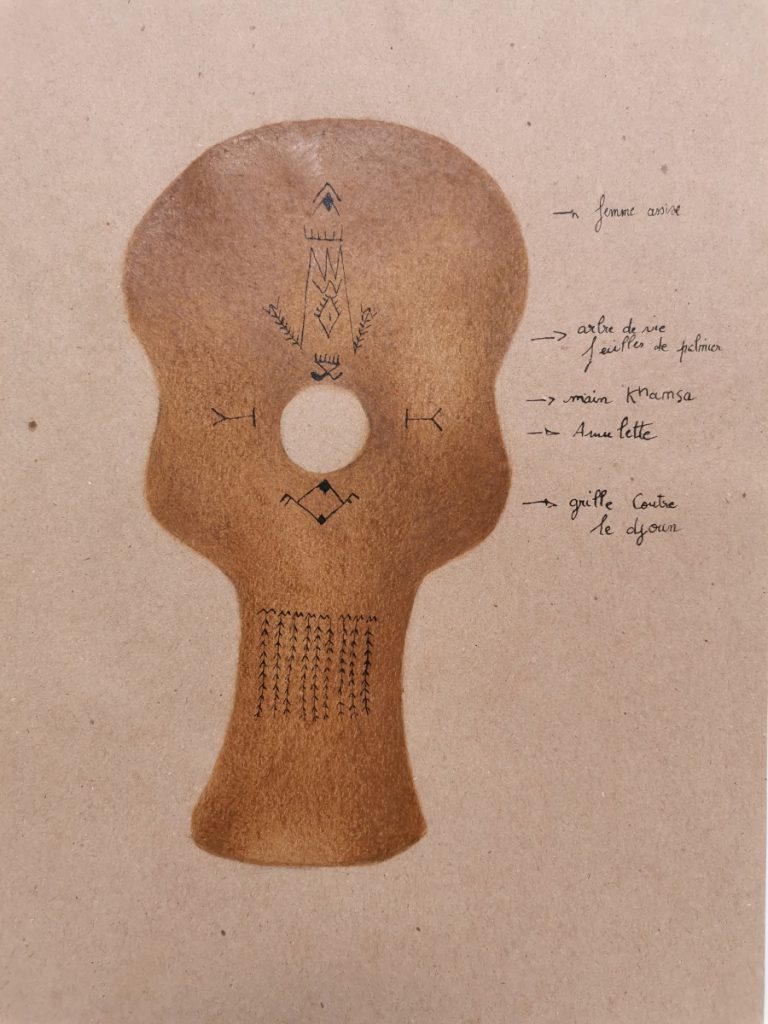
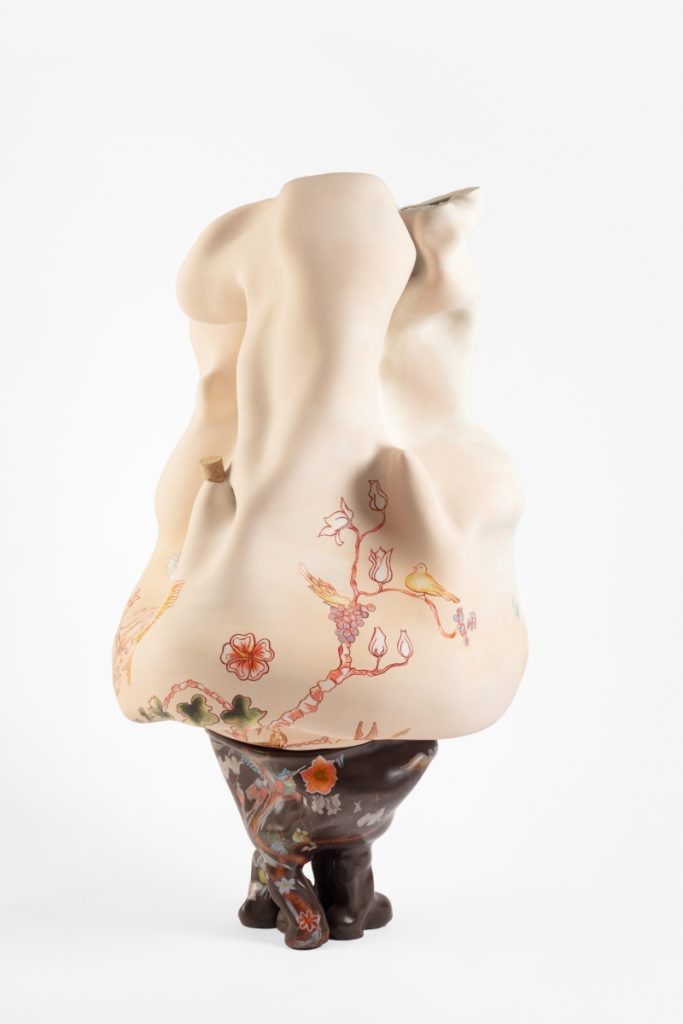
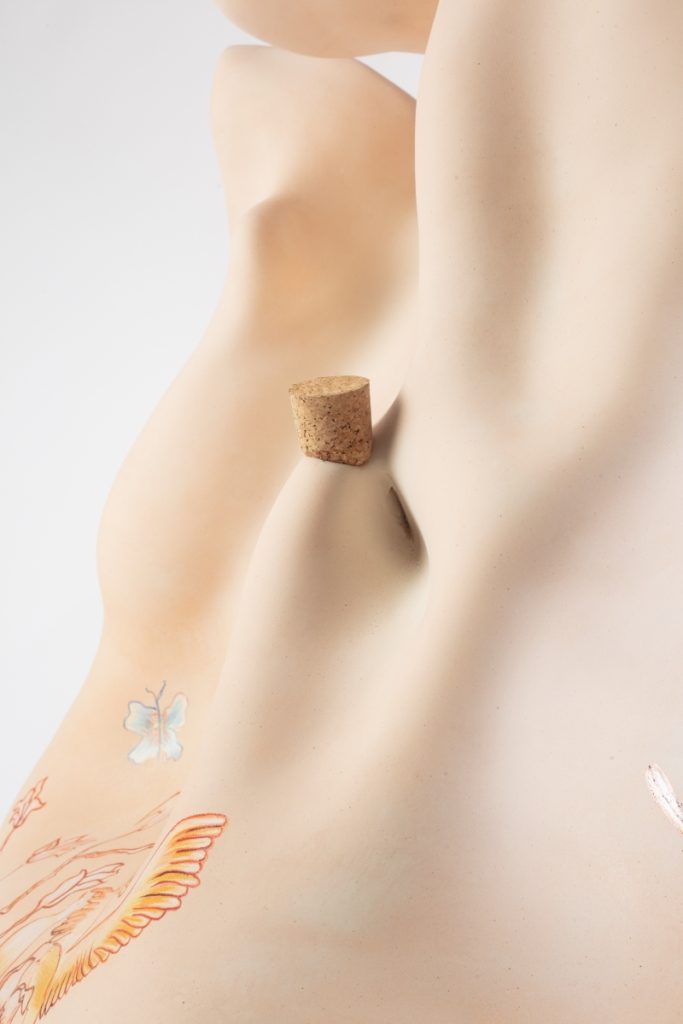
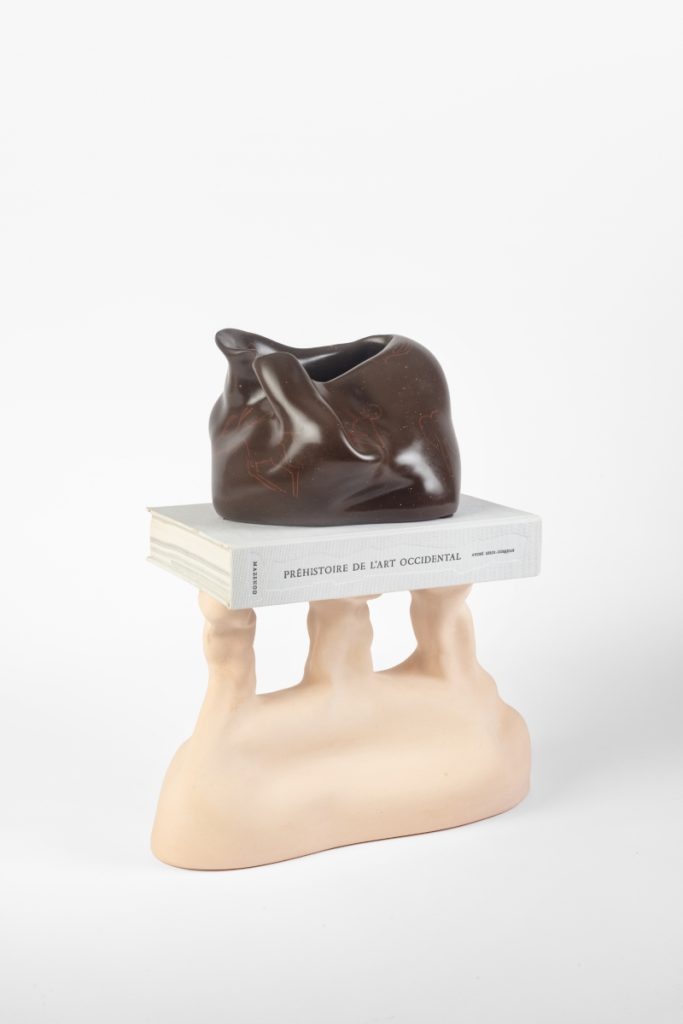
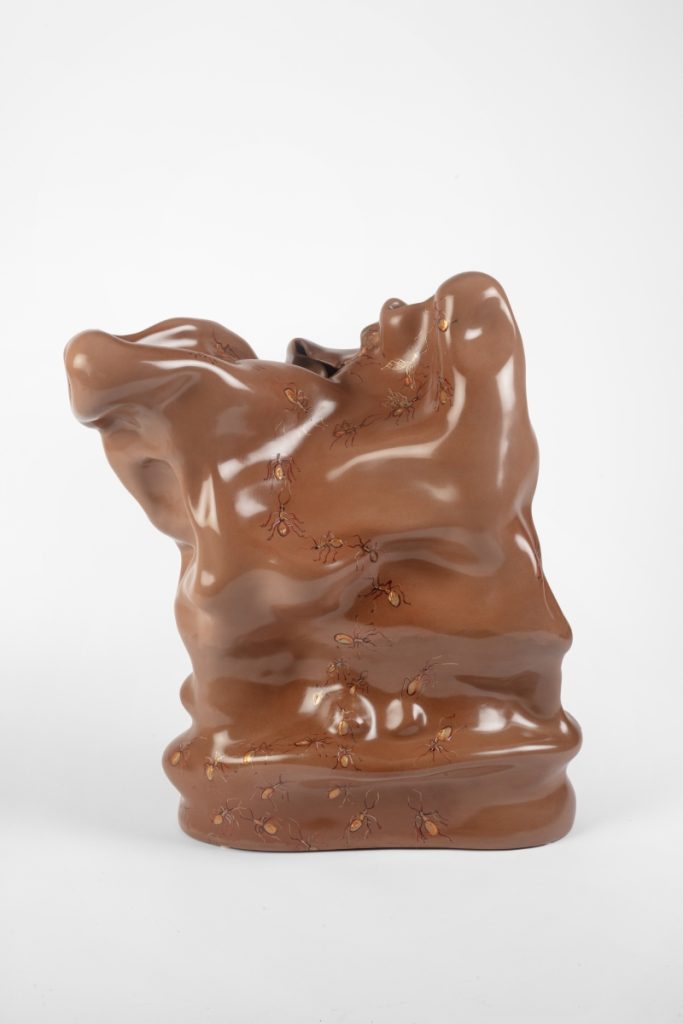
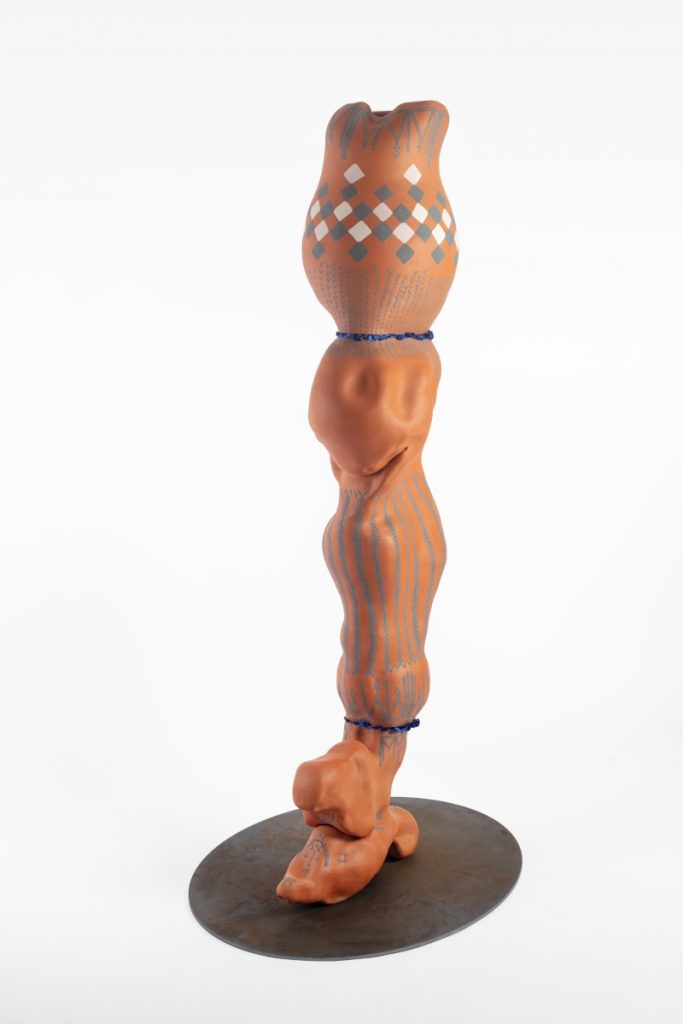
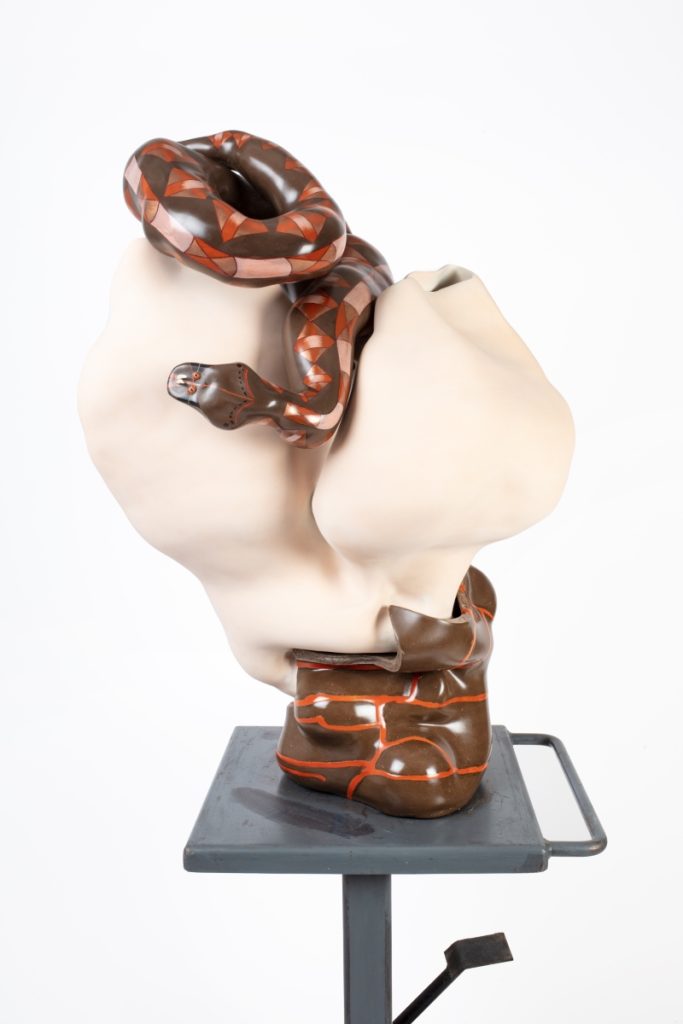
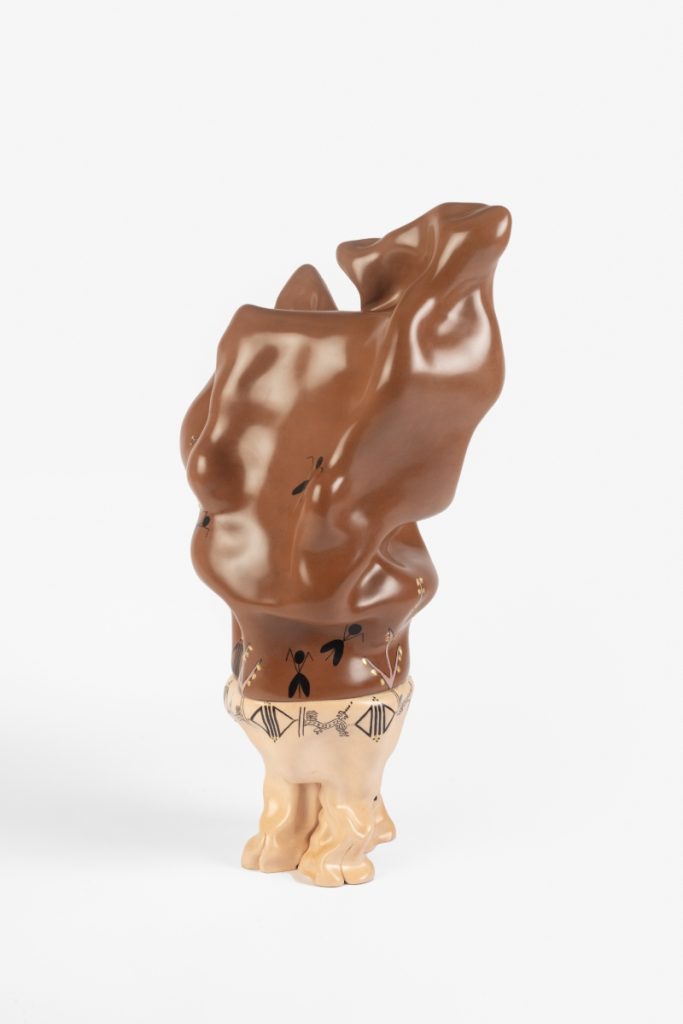
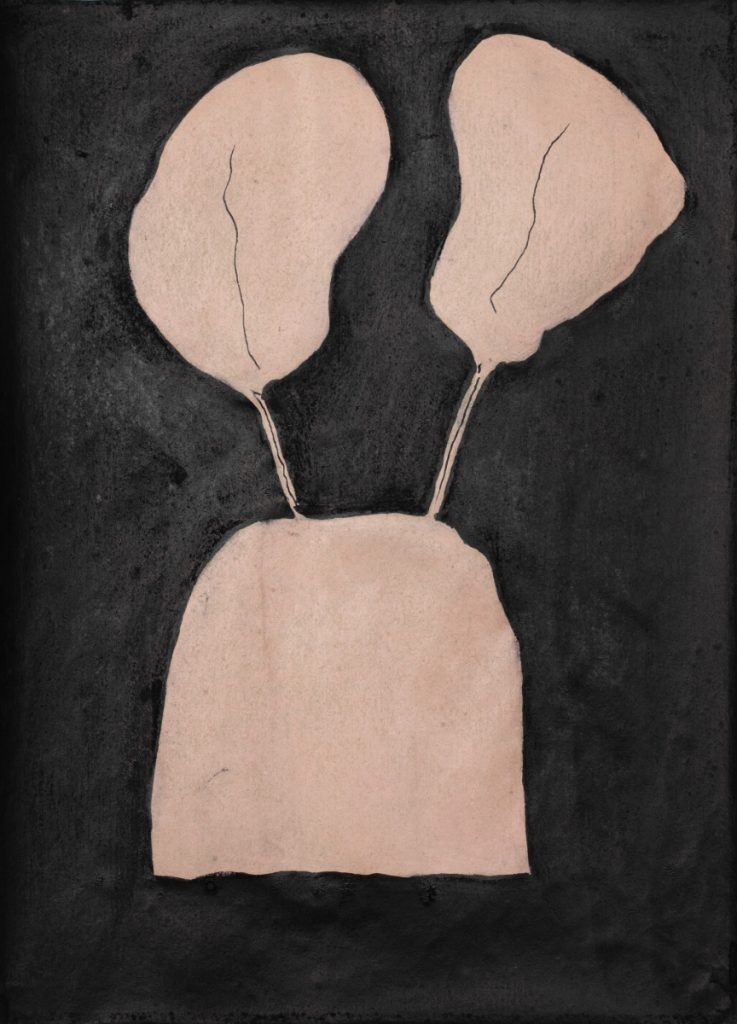
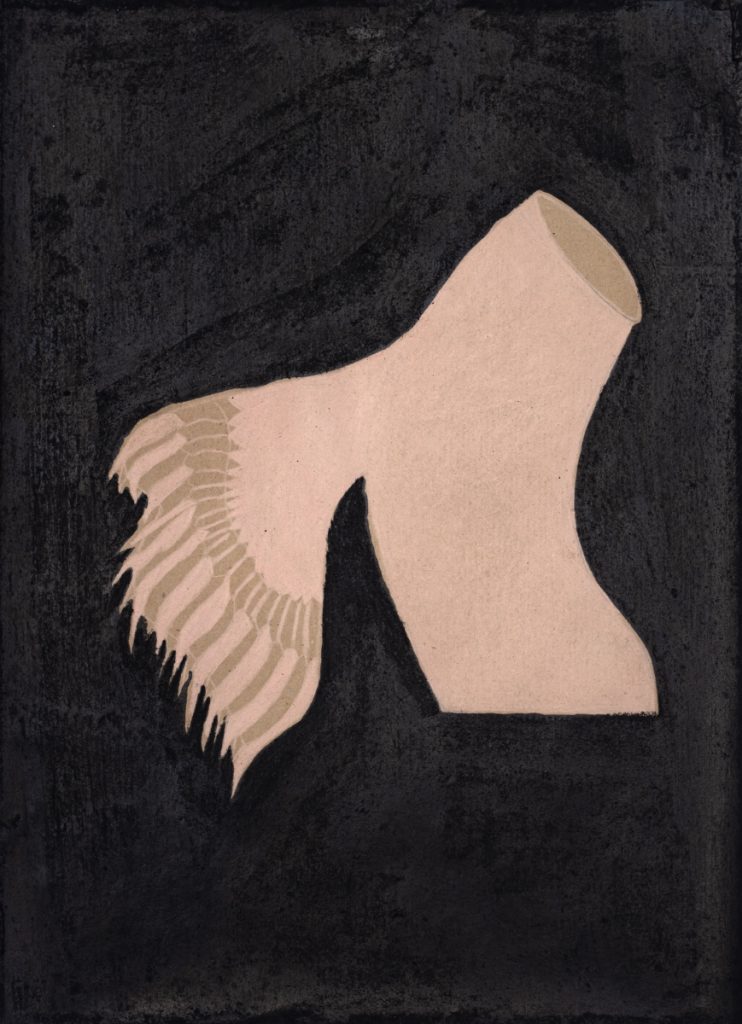
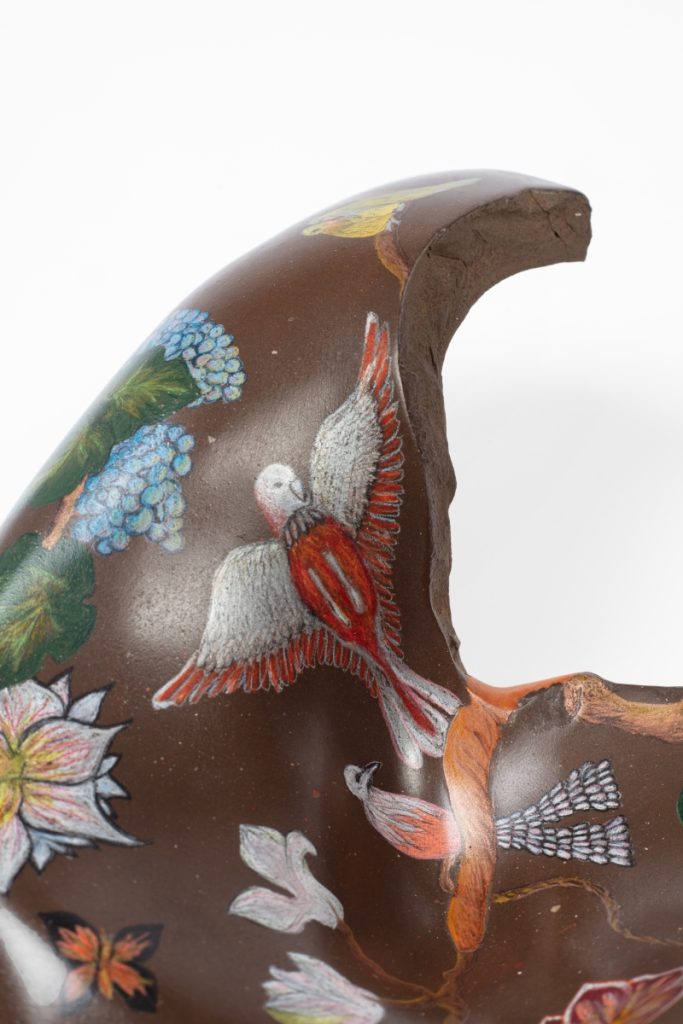
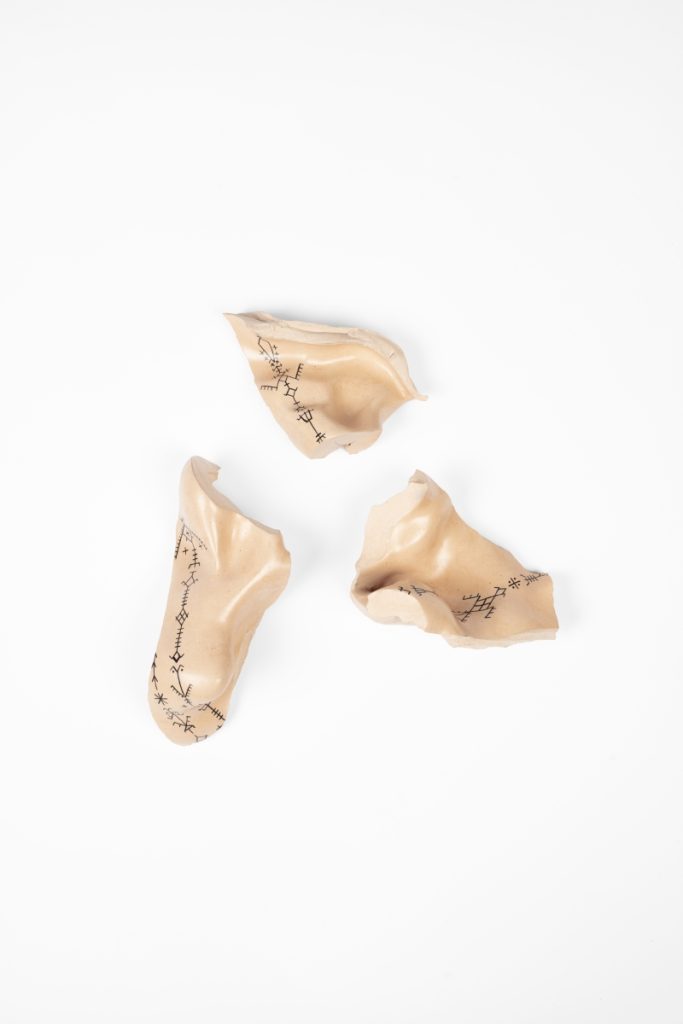
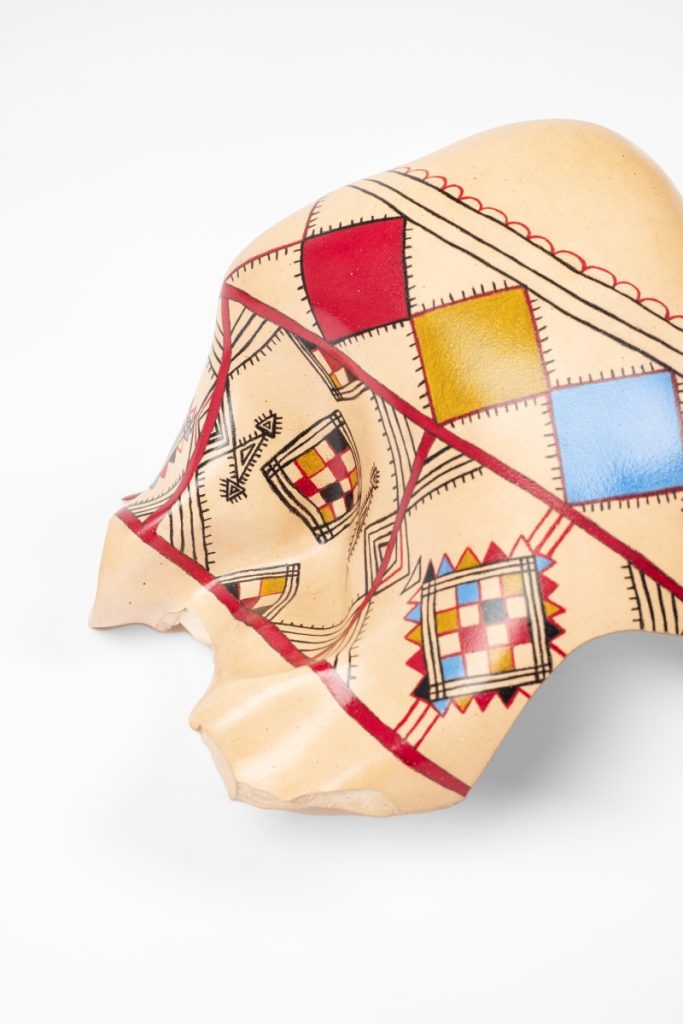
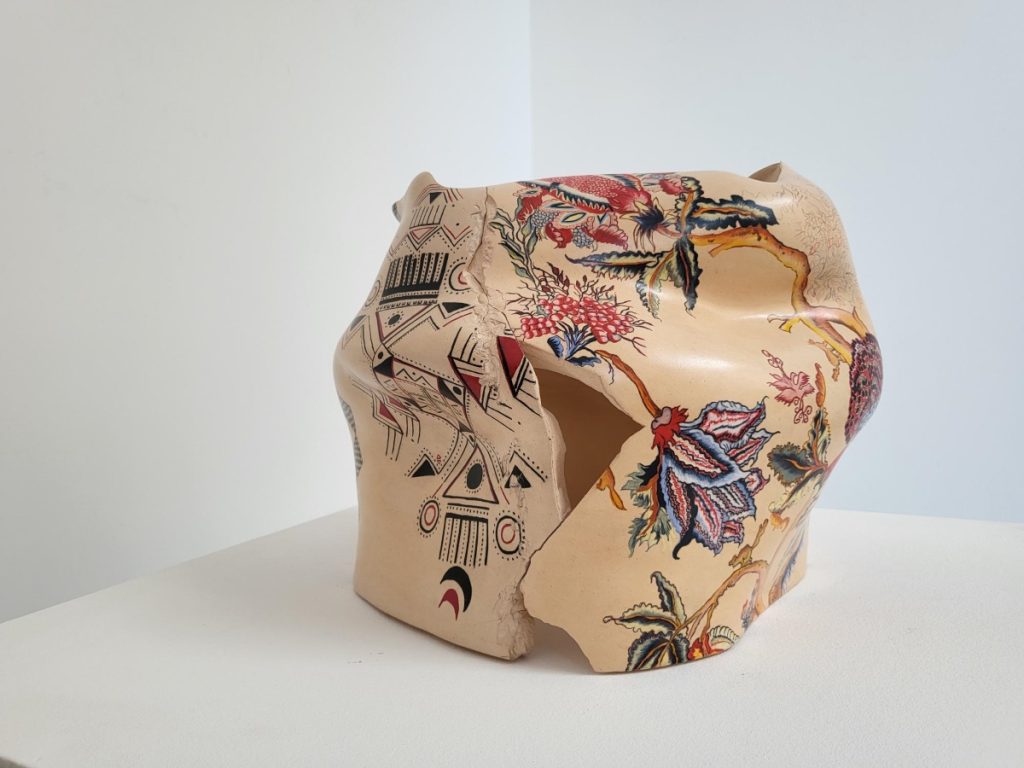
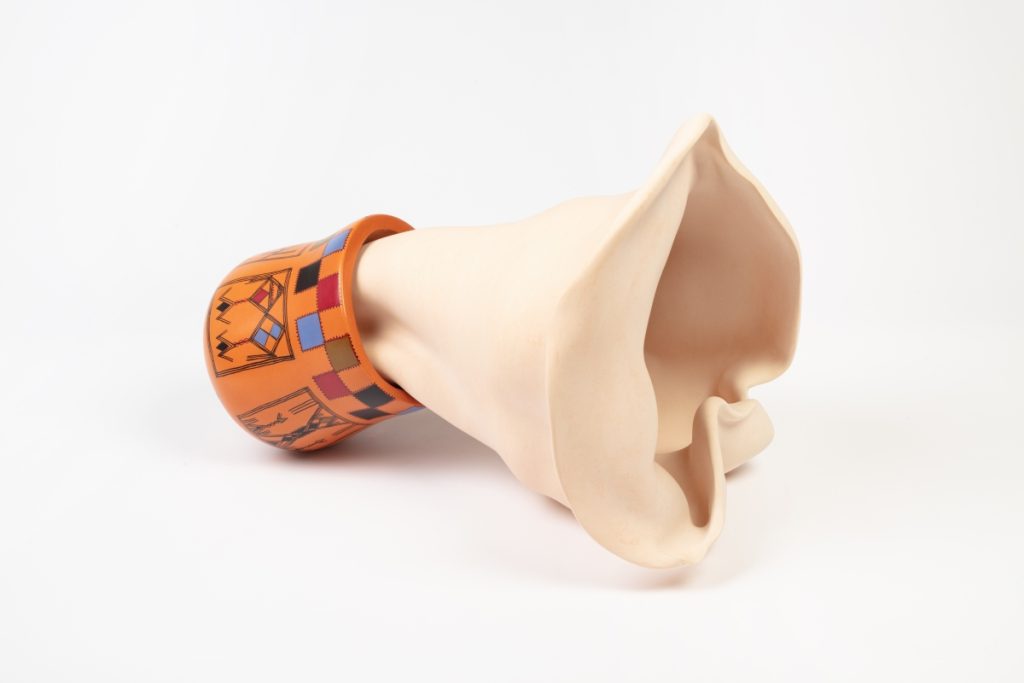
Farida Le Suavé: Pre-histories is on view at Galerie Maria Lund, Paris
November 18, 2022 – January 14, 2023
Farida Le Suavé’s ceramic sculptures have been formed and marked by mythological times and borrowings from various historical human civilizations. The artist belongs to her time, whilst simultaneously surpassing it. Archaism and contemporaneity are closely intertwined in her works, rich with a delicately balanced suggestivity. Her forms have an undeniable human echo; they are languorous, eager, skillful and clumsy, tragic, funny, sensual and sometimes suffering. An ambiguity is introduced by the orifices, which refer back to the object-container. The artist seizes upon this ambiguity and diverts it by endowing the works with their own breath.
The colour of the clay is that of the skin – white, red, black… the sculptures’ texture is smooth, silky like a dermis. Certain pieces present undulating ornaments, signs and symbols on their surfaces, drawn in coloured pencil-like tattoos. We can discern landscapes, rhythms and incantations. The drawings, rebuses and puzzles on paper, which Farida Le Suavé has been creating since childhood, find a new ground here. They become one with her three-dimensional works, as the cave paintings of our ancestors became one with the walls of the underground world that hosted them.
Panser
Text by Elora Weill-Engerer
Here, the belly is slumped, the lips loose and the totality splayed on the ground like jowls heated by the sum of spewed words. There, the feet are paws, supporting a curved and fertile mass which seems poised to come to life. It is an opportunity to recall the eminently corporeal dimension of the vocabulary associated with pottery (neck, bottom, belly, shoulder), and also a way to indicate the mystical presence of Farida Le Suavé’s ceramics. This object that has served, given birth and poured out its contents leaves a void that only thought can fill. Although it retains the memory of centuries-old containers deployed around the Mediterranean (jars, amphoras, dolia, kraters), its form responds to the authority of the hands and the organic breath alone: swellings indicate that something is moving inside.
In the practice of ornamentation, it is common to indicate the object’s function by a precise form and by inscribing multiple details on its surface: containers devoted to libations or to the conservation of wine, oil or milk will therefore present different aspects. In Farida Le Suavé’s work, this observation takes on an organic dimension: feeling physically what is perceived visually. These gravid ceramics shape after they have been shaped – do we create in order for this creation (or creature) to act on us? They mirror the effect of their function, as if they had been materially transformed by the action they were created for. Their anthropomorphism is accentuated, since they are presented from an empathetic perspective, the one from which we naturally consider everything that seems endowed with affects. Especially since the smooth, soft texture of the fine clays used by the artist and their shades, ranging from dark brown to light beige, make the surface reminiscent of skin. And the role of colour does not preclude that of drawing. For Farida Le Suavé, ceramics are an extension of the practice of drawing, the line of which is made manifest in two ways: firstly, in the motifs of arabesques or Berber and Coptic signs, drawn in pencil like tattoos on these reddish-purple clay volumes; and secondly, by the very line of the form, cut to the quick in the breaking of the shards.
From the envelope to the structure, Farida Le Suavé’s ceramics therefore challenge the relationship between the ornamental and the non-ornamental as that between the useless and the necessary. In colonial and progressive thinking, ornamentation was the prerogative of peoples without writing. Associated with seduction and femininity, it was not to be confused with the subject, whose essential function was to produce meaning. The recurrence of the ornament’s defining motif was seen as the mark of the craftsman rather than that of the artist. Its aim was to be decorative, that is to suit (decere), or, literally, to arrive at the same point as the main subject. Against this Platonic thinking which denounces adornment as vulgar, useless, superficial and distinct from beauty, Farida Le Suavé’s work places the ornament in the context of universal and magical language. It does not refer to adornment in the sense of “decoration” but in the more secondary sense of protection, which “shields” the individual from the evil eye. The ornament becomes a surviving sign, enabling us to link formlessness back to reality and to anchor it in a narrative.
Translated from French by Juliet Powys
Farida Le Suavé (born in France in 1969) began her career in the textile industry as an “apprentice” in a Parisian fashion house. The desire to devote herself to personal artistic research led her to the Beaux-Arts d’Angers, from which she graduated in 2005. During her studies, her primary vocation was that of painting, but an internship in a ceramics studio and the discovery of pink clay from Saint-Amand-en-Puisaye triggered a breakthrough. Since then, sculpture has been at the heart of the artist’s practice.
Farida Le Suavé has taken part in a great many exhibitions in France, including Céramique Fiction (Musée des Beaux Arts — Rouen, 2006) L’Art dans les Chapelles (Pays de Pontivy/Saint Nicolas des Eaux, 2009), Circuit céramique aux Arts Décoratifs (Musée des Arts Décoratifs — Paris, 2011), Le beau est toujours bizarre (FRAC Haute Normandie — Sotteville-les-Rouen, 2011), WANI (Fondation Entreprise Ricard Art contemporain — Paris, 2011) and Formes vivantes (Musée National Adrian Dubouché – Limoges, 2019). She had an exhibition at the Espace Grandjean in Vallauris in 2010 and the NextLevel Gallery presented her solo show O in 2015. Two years later, the Chapelle des Calvairiennes in Mayenne – a splendid baroque chapel which is now a contemporary art venue – hosted her exhibition La part des anges – a distillation of approximately five years of work, including the sculptures created in Chicago, where she lived for three years. In 2020, she exhibited at the Théâtre National in Alençon and the Médiathèque de Flers, and in the summer of 2021, the FRAC de Normandie Caen hosted her solo exhibition Escape – de Chicago à Cap Carbon. In 2022, her work was included in Varia at the CAC – Meymac. During the winter of 2022-2023, she will be featured in the second part of Formes vivantes at SEVRES – Musée national de la céramique.
Farida Le Suavé’s work is included in the public collections of FRAC Normandie Rouen, FRAC Normandie Caen, the Artothèques of Angers and Caen, Collège Charles Léandres (La Férrière-aux étangs), and CHU Angers. She has been the subject of numerous feature articles and publications.
Contact
galerie@marialund.com
Galerie Maria Lund
48 rue de Turenne
75003 Paris
France
Photos of individual works by Anthony Girardi. Installation views by Axel Fried.



